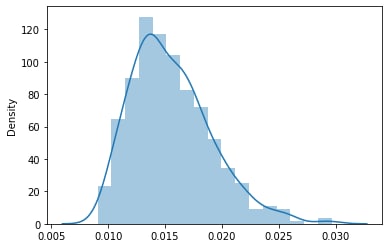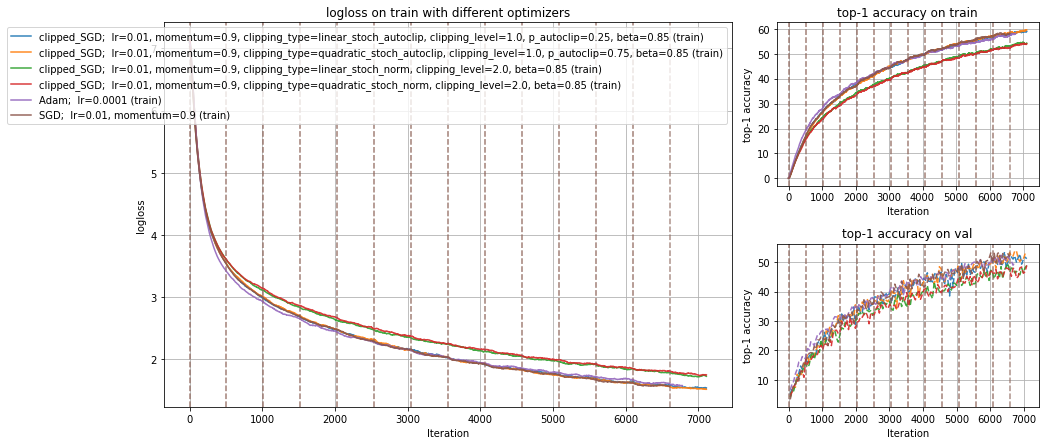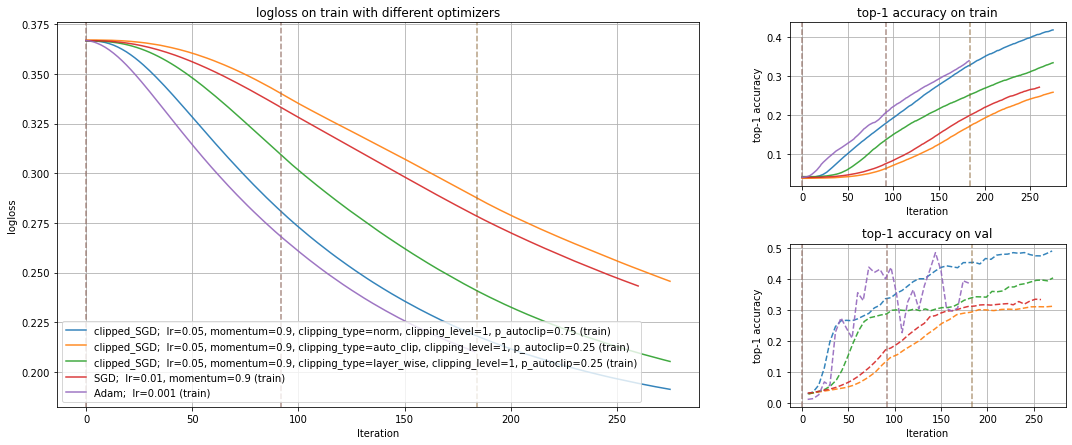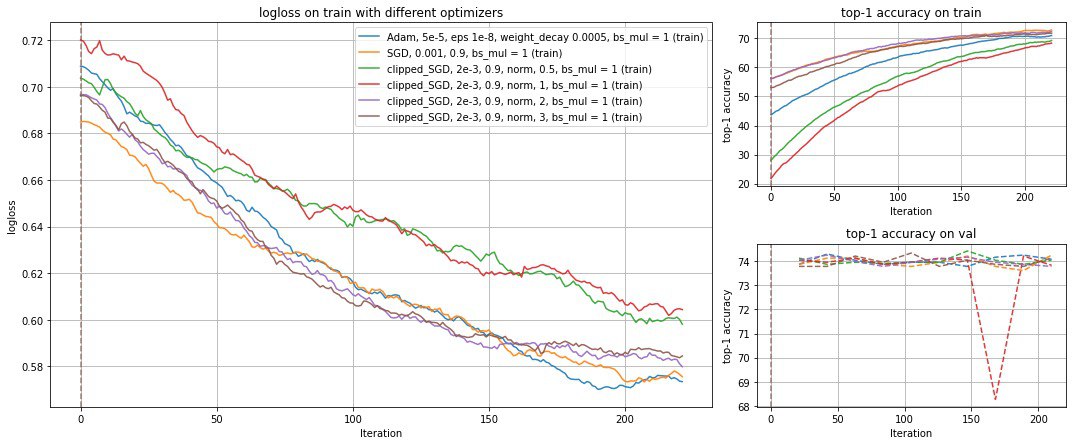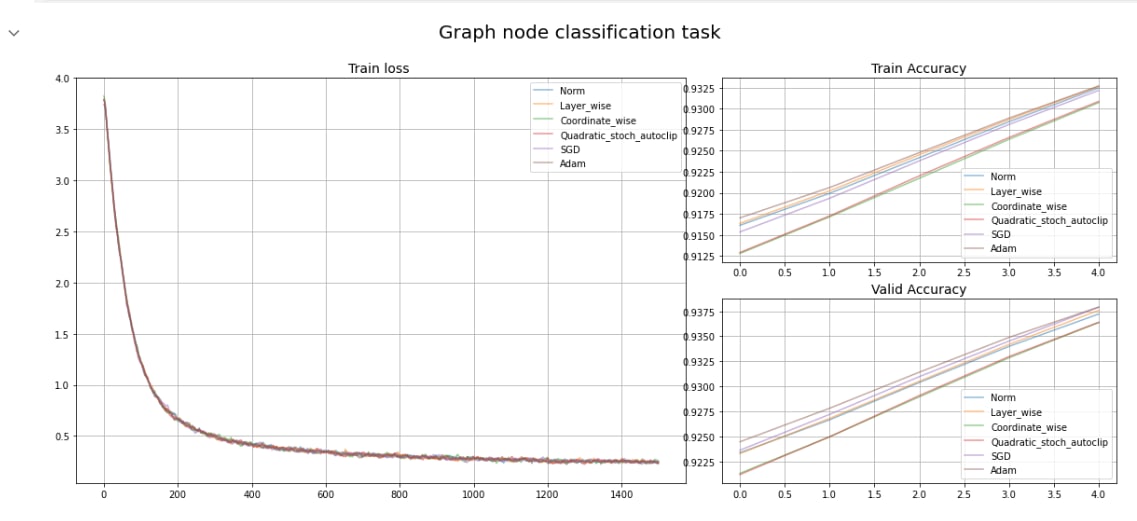torch-clip a library to improve optimization methods by clipping off heavy-tailed gradient. This makes it possible to increase the accuracy and speed of convergence during the training of neural networks on a specific number of tasks.
Example of the distribution of gradient lengths with heavy tails:
you can install our library using pip:
pip install torch-clip
numpy~=1.20.0
torch~=1.11.0+cu113
matplotlib~=3.4.3
tqdm~=4.62.3In the last few years, for various neural network training models (for example, BERT + CoLA), it has been found that in the case of "large stochastic gradients", it is advantageous to use special clipping (clipping/normalization) of the batched gradient. Since all modern machine learning, one way or another, ultimately boils down to stochastic optimization problems, the question of exactly how to "clip" large values of batched gradients plays a key role in the development of effective numerical training methods for a large class of models. This repository implements optimizers for the pytorch library with different clipping methods.
- Norm Clipping
- Linear Random Norm Clipping;
- Quadratic Random Norm Clipping;
- Layer Wise Clipping;
- Coordinate Wise Clipping;
- Auto Clipping;
- Linear Random Auto Clipping;
- Quadratic Random Auto Clipping.
We conducted a study to study the quality of our clipping methods on a number of tasks: image classification, semantic segmentation, text classification and graph-node classification.
Norm-clipping is a basic clipping method that uses a constant to clip gradient.
LinearRandNormClip is a norm-clipping method using randomization when clipping gradient, which helps to shift the mathematical expectation less.
QuadraticRandNormClip is a norm-clipping method using randomization when clipping gradient and increasing the probability of clipping by squaring.
LayerWiseClip is a constant clipping method that clips gradients for each layer of the model separately
CoordWiseClip is a constant clipping method that clips gradients for each model parameters of the model separately (because of this, the direction of the gradient vector may change)
AutoClip is a clipping method that automatically selects the pth percentile in the gradient length distribution and uses it as a parameter for clipping.
LinearRandAutoClip is an auto-clipping method, using randomization when clipping gradient, which helps to shift the mathematical expectation less.
QuadraticRandAutoClip is an automatic clipping method that uses randomization when clipping gradient and squaring the clipping probability.
You can use our optimizers as well as all the standard optimizers from the pytorch library
from torch_clip.optimizers import ClippedSGD
optimizer = ClippedSGD(model.parameters(), lr=5e-2, momentum=0.9, clipping_type="layer_wise", clipping_level=1)
loss = my_loss_function
for epoch in range(EPOCHS):
for i, data in enumerate(train_loader, 0):
outputs = net(inputs)
loss = criterion(outputs, labels)
loss.backward()
optimizer.step()
optimizer.zero_grad()from torch_clip.optimizers import ClippedSGD
from torch_clip.restarter import Restarter
from torch_clip.optimizers_collector import OptimizerProperties, ModelProperties, RestartProperties
loss = my_loss_function
model = my_model_object
optimizer_props = OptimizerProperties(ClippedSGD, lr=5e-2, momentum=0.9,
clipping_type="layer_wise", clipping_level=1)
restarter = Restarter(optimizer_properties=optimizer_props, first_restart_steps_cnt=50,
restart_coeff=1.25, max_steps_cnt=2000)
optimizer = optimizer_props.optimizer_class(model.parameters(), **optimizer_props.optimizer_kwargs)
for epoch in range(EPOCHS):
for i, data in enumerate(train_loader, 0):
outputs = model(inputs)
loss = criterion(outputs, labels)
loss.backward()
optimizer.step()
optimizer.zero_grad()
restarter.add_coords(model.parameters())
optimizers = restarter.make_restart(net, optimizer)